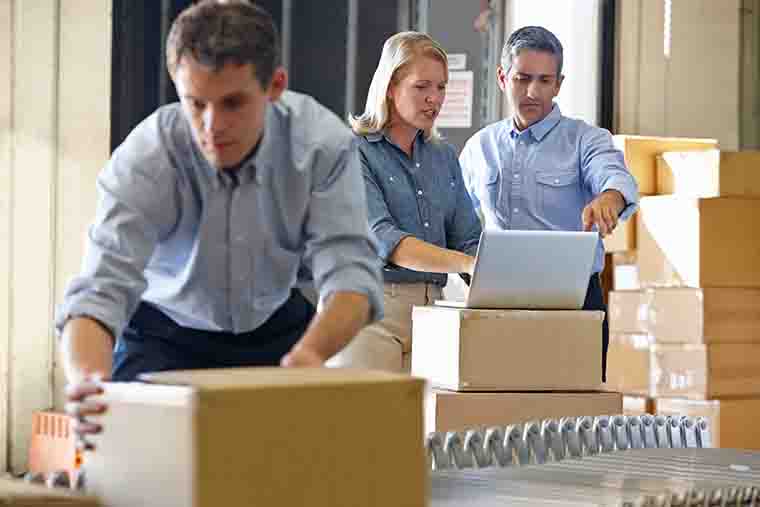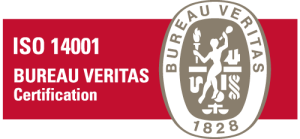Packaging is one of the most overlooked processes in logistics. However, proper management of this task is essential for reducing shipping costs. In this article, we explain how to implement effective Packaging Management and outline the best practices to optimize the packaging process.
What Is Packaging Management?
Packaging Management refers to the tasks carried out in logistics to optimize the packaging of shipments. Effective packaging is key to reducing costs, minimizing risks, and achieving sustainability goals.
Packaging plays a crucial role in the supply chain of any production process—so much so that it can determine the logistical success of a business. Therefore, it is essential to invest the necessary time to find the right packaging, as it directly impacts critical aspects such as:
- Shipping and storage costs: These can increase or decrease depending on the packaging used. For example, collapsible packaging takes up less space when empty, and stackable packaging allows for more units to fit in less space without compromising the contents.
- Protection of goods: Custom packaging solutions help transport the maximum number of products in optimal conditions, reducing risks of damage or breakage.
- Environmental impact: Reusable materials or corrugated cardboard packaging are ideal for achieving more sustainable logistics practices.
Best Practices to Optimize Packaging
What defines effective Packaging Management? Below, we explore key actions you can take to enhance this critical logistics process for your business.
Eliminating Unnecessary Packaging Layers
Product packaging typically consists of three levels or layers:
- Primary packaging: This is the first material that wraps the item and keeps it in place. It is the layer we interact with directly when using the product. For instance, the plastic container of a yogurt is its primary packaging.
- Secondary packaging: This additional layer surrounds and protects the primary packaging. It acts as a shield for the products and is typically removed before use. A common example is the cardboard that covers a pack of yogurts.
- Tertiary packaging: This final protective layer is used for transport, storage, and handling. For example, a cardboard box containing yogurt packs at a store’s loading dock is tertiary packaging.
Companies should assess whether all three layers are truly necessary. After a thorough analysis, they may find it feasible to eliminate one or more layers, resulting in a simpler, more efficient design that reduces waste.
To cut costs, businesses should aim for minimalist designs that still provide adequate protection. For instance, adjustable boxes can be used as secondary packaging. These boxes adapt to the product’s dimensions, maximizing storage space and ensuring a perfect fit. Their adaptability also eliminates the need for tertiary protective layers, reducing waste and minimizing the risk of product damage.
Using Sustainable Packaging Materials
Opting for sustainable packaging materials, such as plant-based alternatives (corn, sugarcane, or bamboo), also contributes to logistics optimization. These natural materials decompose without leaving toxic residues, significantly reducing long-term waste.
Reusable materials like corrugated cardboard are another excellent option. Corrugated cardboard boxes can be reused multiple times, further minimizing waste. This approach fosters a closed-loop circular packaging system where materials are continuously recycled or reused, ideally progressing toward zero waste.
Leveraging Technology to Optimize Design
Imagine designing and refining product packaging without producing a single physical prototype. This is now possible thanks to technological tools like CAD (computer-aided design) software.
These digital tools allow companies to simulate and analyze different configurations and materials in a virtual environment, enabling them to identify the most efficient design before moving to production.
Artificial intelligence also plays a crucial role in packaging optimization. Using advanced algorithms, these tools analyze factors such as size, weight, and product fragility. This enables the creation of packaging solutions that maximize protection while minimizing material usage, tailored to each product’s needs.
Integrating Smart Labels
Packaging innovation goes beyond attractive design to incorporate added functionality. Smart labels can add value and improve the customer experience.
For instance, RFID (radio frequency identification) tags provide product details, verify authenticity, and facilitate traceability. These tags can also include additional information, such as usage recommendations or links to interactive content. Imagine buying a bottle of wine and accessing tasting notes, pairing suggestions, or videos about the vineyard’s history by scanning the label.
Smart packaging can also include indicators that show product freshness, such as time-temperature indicators (TTIs). These change color based on the conditions the product has been exposed to, making them especially useful for perishable items like fruits and vegetables. This boosts customer confidence and helps reduce food waste.
Automating the Packaging Process
Automation has become a key solution for optimizing packaging processes. Automated machines work continuously, filling packages with precision and speed unmatched by manual processes.
These technologies not only increase productivity but also ensure high quality. Robotic systems with artificial vision can inspect labeling, alignment, and sealing, ensuring everything is in perfect condition. They can also detect and reject incorrectly weighted products, reducing errors and waste.
Another significant benefit of automation is improved workplace safety. By delegating dangerous tasks, such as handling heavy objects or hazardous materials, to machines, the risk of accidents is reduced, safeguarding employee health.
From design to automation, these technological strategies are transforming packaging management, helping companies become more efficient, sustainable, and competitive.
Do you need help with Packaging Management? Contact Partida Logistics! Our team of experts will guide you in optimizing your packaging process and reducing logistics costs for your business.




